Etno House Shancheva – Kratovo town
Etno House Shancheva. Kratovo was a major mining center in the Macedonian part of the Ottoman Empire. For this reason, Saxon settlers came here during the Middle Ages. Moreover, Kratovo is also known as the town of towers and bridges. The town developed in the crater of a former extinct volcano. Nowadays, it’s still interspersed with defense towers and old bridges between steep valleys and different neighborhoods (Catholic, Orthodox, Muslim, and Jewish). Only six of the twelve medieval towers have been preserved whilst the high-arched bridges have retained their original role and are still in use.
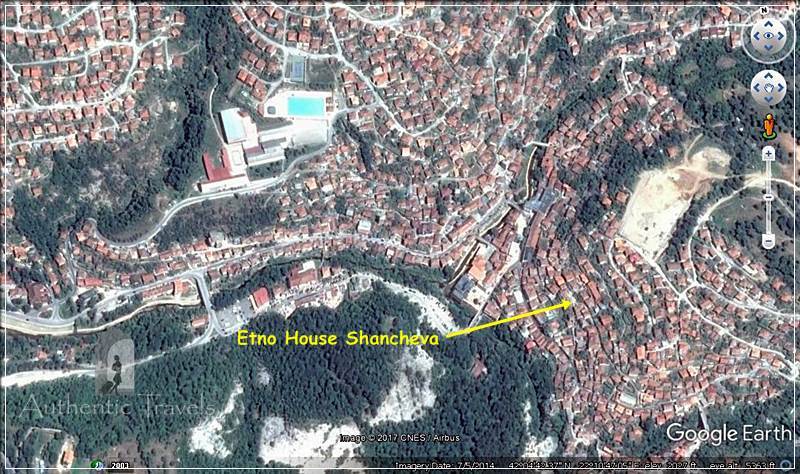
From Čarsija (the street of the old Turkish bazaar) you steeply go up along Josif Daskalov street, a cobbled stone street that leads to the Orthodox Church of St. John the Baptist (Sveti Jovan Opsecen). At a certain point, a narrow lane makes a U-turn with the Skopska Street and an indicator informs you that there are only 85 meters left to Etno House Shancheva. You pass several defense towers around which the locals have set up their vegetable gardens. After passing the Suzka Tower, you reach a tiny Y-shaped turnoff where a 300 years old house stands impressively.
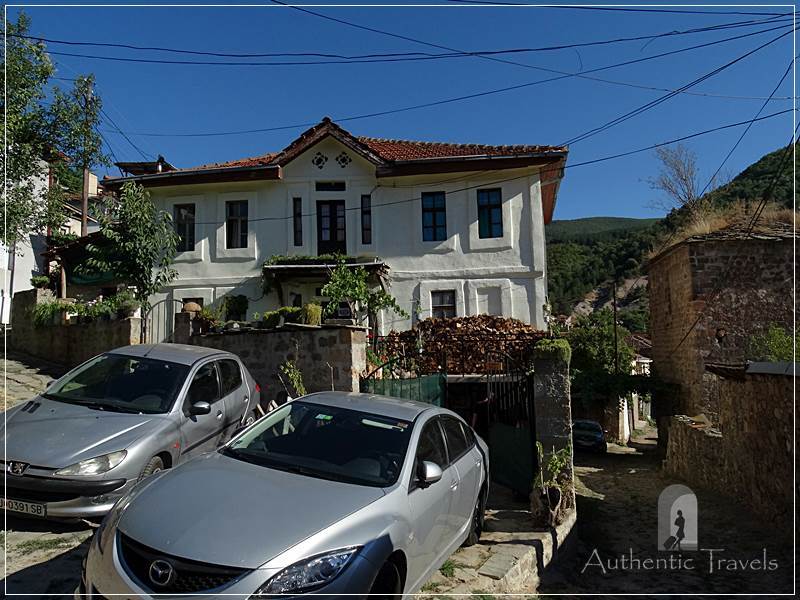
Etno House Shancheva – The House
House Shancheva is the first guesthouse from the Osogovo Region. Its motto is the catchy slogan: ”quiet hostel with slow food.” The house belonged to the Gurgincev family whose members were traders selling textiles in Thessaloniki and Dubrovnik. In 2009, Stevce Donevski bought the house and rehabilitated it as an authentic guesthouse. The name of the former landlady – Shana (meaning ‘beautiful, elegant, and fashionable lady’ in the local dialect’) inspired the current guesthouse name – ‘Shancheva.’
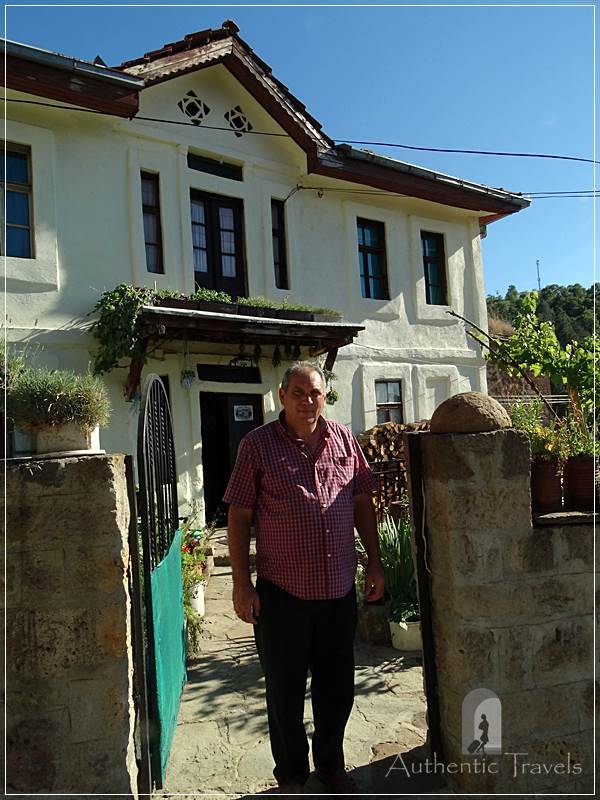
The old house is entirely built of wood and has an underground stone-cellar. The wooden doors and windows have modest dimensions, similar to the ones of the traditional houses from Kotor (Montenegro). Both the exterior facades and interior rooms are entirely coated with natural colored plaster.
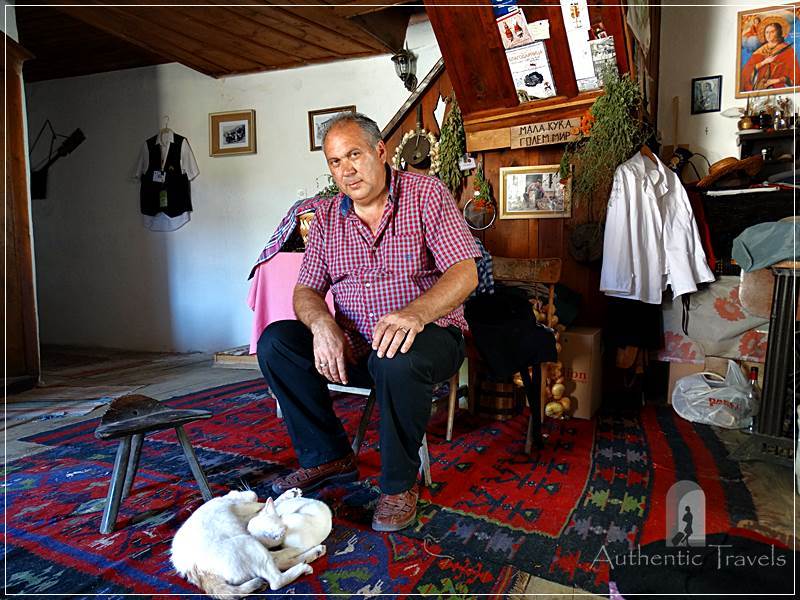
In the traditional Macedonian house, there was a cellar in the basement where owners store wine, brandy, and food. At the ground floor, there was a small textile shop, a kitchen, and a guestroom. A steep and uneven wooden staircase went to the first level where there was a salon with a dining room and a balcony centrally located on the main facade. Three bedrooms for the family members had access from this central salon.
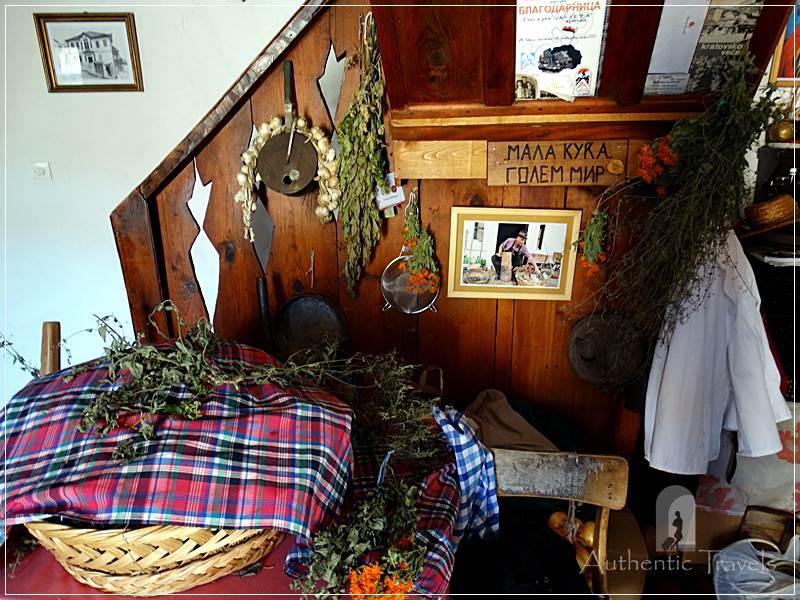
Stevce fully restored the house after buying it and retained its original architecture, interior design, and old traditional furniture. Nowadays, an elaborately arranged flower garden stands in front of the main entrance and displays samples of former volcano stones. Additionally, a stack of cut firewood in the garden proves that winters may be very cold even if summers may be very hot.
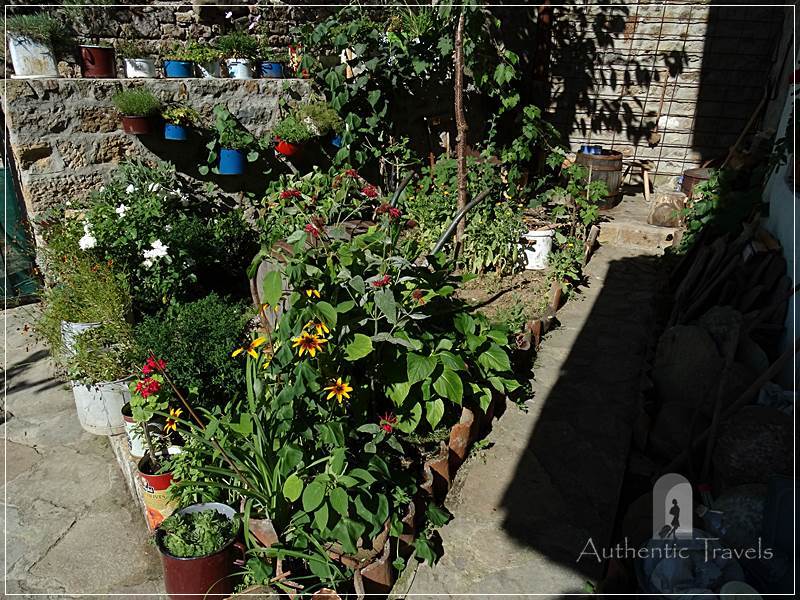
Etno House Shancheva – Interior Design
From the level of the garden, you enter a central lobby that connects different rooms. It also displays a collection of traditional objects and local products, ranging from ceramic pots and jugs, jars with plums and figs jam, to dried aromatic herbs, salt with spices, wine, brandy and rakija (traditional alcoholic drink made from different fruits). The salt with spices (kratovski sol or k’cana sol) is a local product unique to Kratovo. The local families bring salt from Thessaloniki. After that, they smash it and mix it with pounded dry vegetables and herbs (rosemary, parsley, basil, mint, corn, spicy paprika). The aromatic salt is usually prepared in July or August after picking up and drying the spices. Stevce cultivates them right in his small garden and has them on hand anytime.
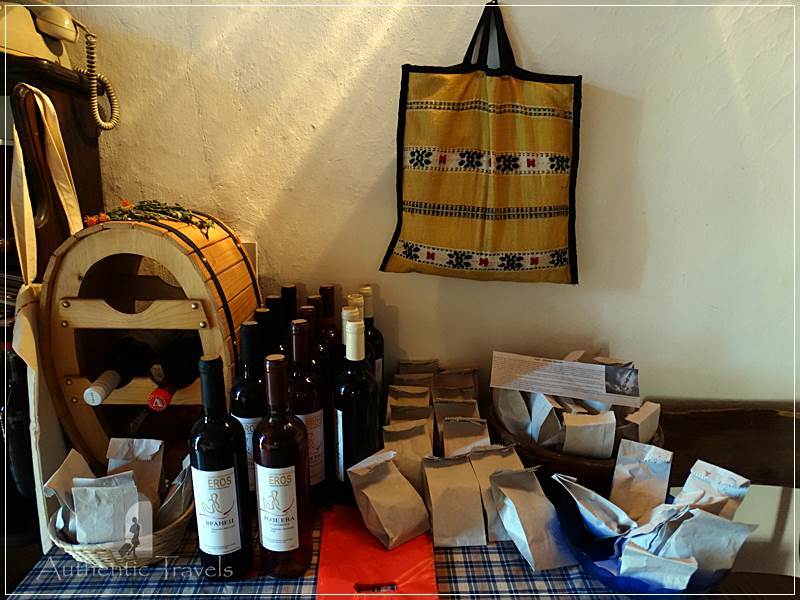
The ground floor of the restored house has kept the location of the old kitchen. Here, Valentina (Stevce’s wife) cooks delicious meals and kittens meow when they smell cooked dishes. A modern bathroom is at the back of the house and it has a large boiler for hot water. A guest room, suggestively named Kratovo, has three beds arranged around a dining table and invites for rest.
A wooden staircase, steep and with uneven steps, climbs to the first floor of the house. The floor has a central salon with displays from Saxon and Turkish clothing, including Stevce’s uniform since he worked at the Electric Factory in former Yugoslavia. Three guest rooms have access from this salon and each room is named after Kratovo’s names from different historical periods (Kratiskara, Koriton, and Krater).
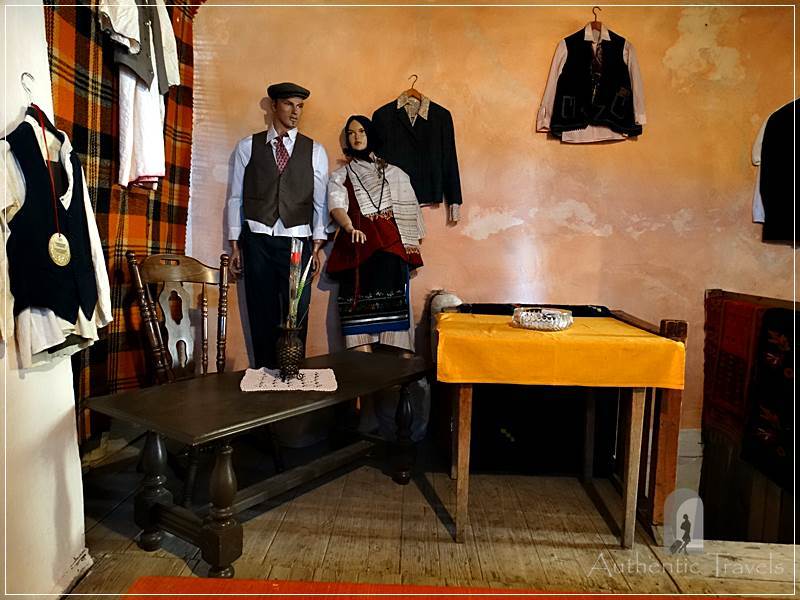
Kratiskara (the name of the town during the Roman period) is a double room with colorful curtains, an old but functional radio, and a big bed with white linen sheets. Koriton (the name of the town during the Byzantine period) is a room for four persons and has twin beds, a big double bed, and handmade carpets. Krater is the smallest room, with only two bunk beds but with enough space for a table with a Turkish coffee set.
The original wooden floor is well preserved throughout the house and natural lime-colored plaster coats all the walls. Handmade carpets with Orthodox motifs and original Macedonian rugs (cerga) animate the house with their lively colors. In the same time, drawings of the old town decorate the walls. Cats are the customary characters of the house, always meowing around or purring in the central lobby.
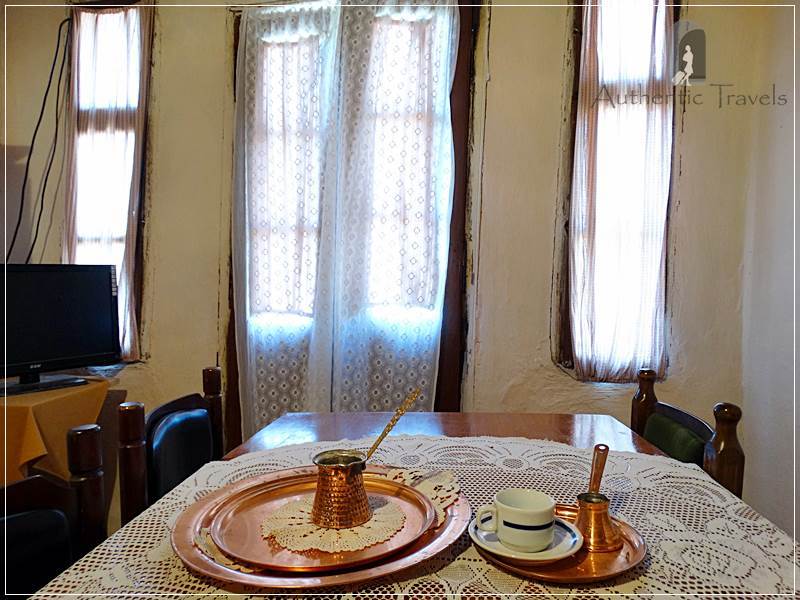
The old cellar displays traditional objects of all kinds, ranging from wicker baskets, bottles, and jars with pickles to old telephones, a bicycle, communist badges, and an installation for preparing rakija drink. A well actually hides the exit from a secret tunnel that played a defensive role in the past and invites to exploration.
Etno House Shancheva – Personal Experience
When I first came to Etno House Shancheva, it was the beginning of my road trip through Macedonia, Albania, and Kosovo (June 2017). I promised Stevce that I would come back and write about this place at the end of my trip. Here I am for the second time (August 2017). As a genuine president of Macedonia’s Slow Food Association, Stevce has offered me and my new Canadian friends (Dave and Sebastien) the most authentic, generous, and unforgettable meals. We have tried grne za (bean soup), klen (fried fish fished by Laste Burma in the Kriva Reka River), tavce gravce (baked beans), and armk (cake with syrup). While I am writing, Stevce has strung colored peppers and has hung them at the house entrance for welcoming guests. A white tomcat is sleeping at my feet and Stevce nicknames it my ‘assistant.’
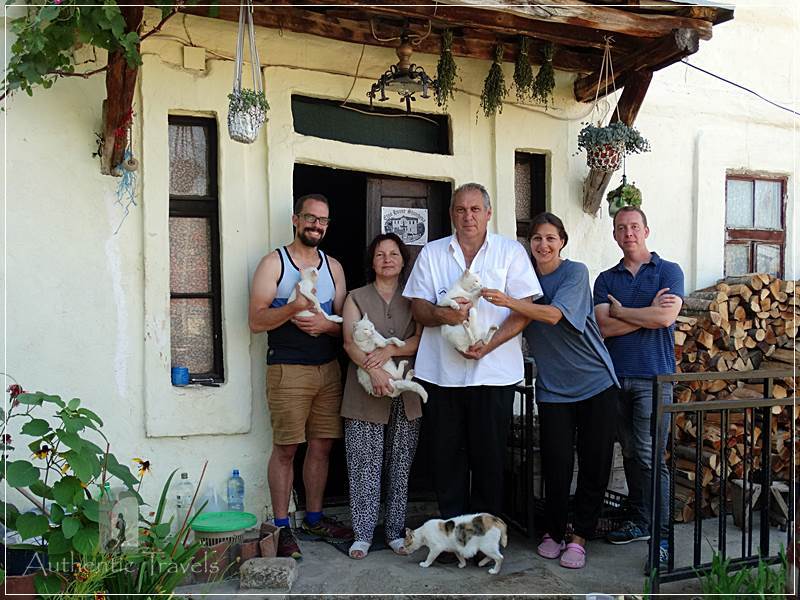
This time I’ve decided to write a guesthouse review directly from the house terrace, surrounded by plants, flowers, and spices. This way, everything I write is completely authentic. Stevce has just left to the downtown and I’ve promised him that we would go together for my last visit through the town tomorrow.
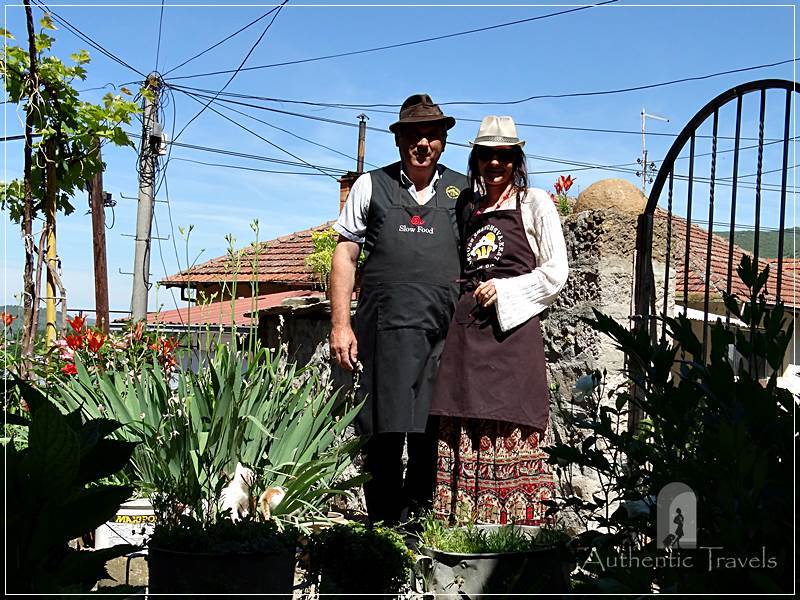
Etno House Shancheva can be found on booking, tripadvisor, or their personal website.
Some more photos from Etno House Shancheva, Kratovo (Macedonia):

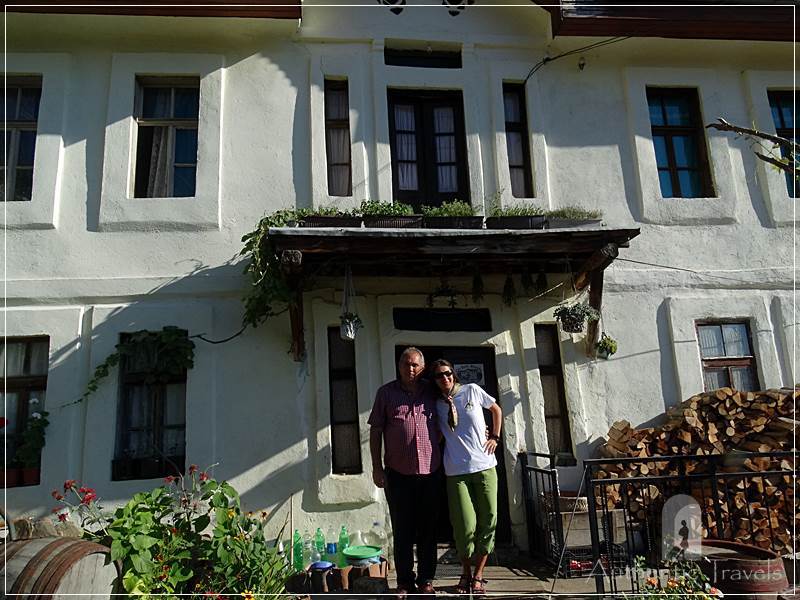
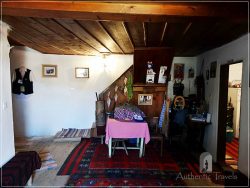
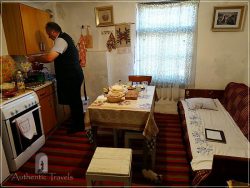
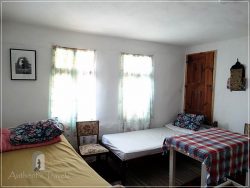
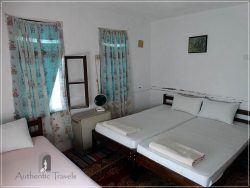
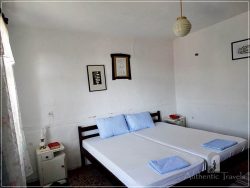
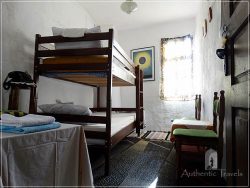
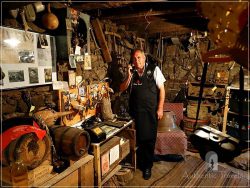
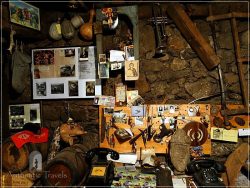
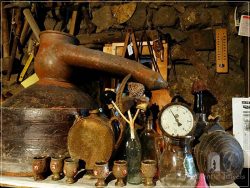
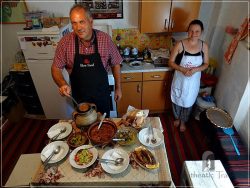
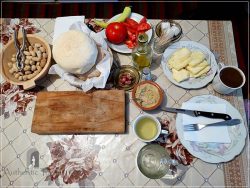
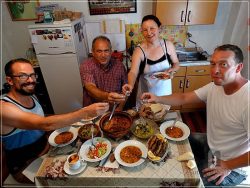
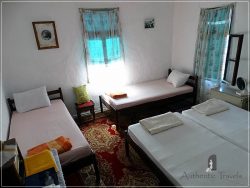
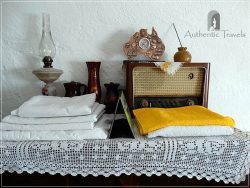
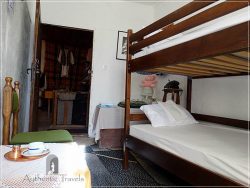
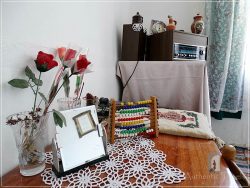
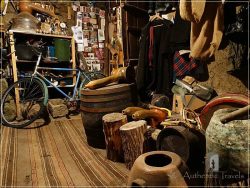
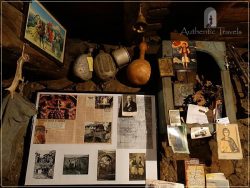
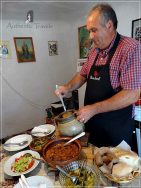
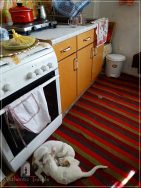
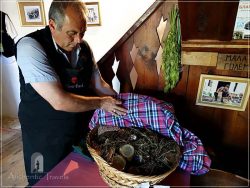

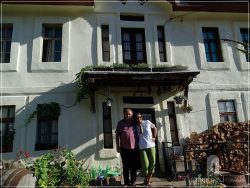
Wow, this looks like a great guesthouse to visit and stay in. I love how they display traditional products around the home. Thanks for sharing this gem!
Stevce put traditional items all over the house, starting with the old cellar, continuing with the ground floor and ending up with the guest rooms where you have old telephones, weaving, and drawings.
Looks like an amazing town with so much history. The guest house looks very unique, warm and welcoming
It is a very special, authentic guesthouse indeed. Beside the fact that it was refurbished in an old traditional house, the owners try to help you all the time and offer you small gifts.
Wow, this is more than just a place to stay. It almost feels like this is a home stay. Love how they preserved a lot of the history in the architecture and the meals you had sound amazing! I wish every place I visited was an authentic experience like this.
Exactly, you’re right Candy. This is the type of the places that I’m looking for. Unfortunately, some people don’t understand this and they create a mass tourism experience.
Etno House Shanche looks like a piece of history caught in a time warp. It is such a fascinating place, the decor and ambience reflects the culture and history of the place in fascinating tones. Staying in such places affords a window to an immersive travel experience.
When I think of that place, I fall in love with life over and over again.
what an interesting and authentic guesthouse. Such places are gems and usually run about very special people as well 🙂 very nice!
If you know some other similar gems, please let me know. I’d love to write about them so that other travelers can hear about them.
We’ve just came back from a two weeks trip around macedonia. Shancheva etnohouse was the greatest place we’ve slept in. And we do not complain about other places, macedonian b&b, or hostels were really good kinda everywhere we have been. Moreover, it is the only one of this kind in the country – or at least we did not heard about any other place like that. It is not a hostel, not a hotel, a home. When we arrived, we were well fed on the first place! Stevce can arrange trips for you, but what is more uncommon, he can show you spots and places you won’t find in a bookguide. But what is really important, Kratovo is out of the bitten tourist tracks, but worth to visit as much as the greatest poi in macedonia, we loved it even more than ohrid (well ok, there is no lake, but who cares ). If you are of a kind who like to sightsee, and you like landscapes – the Kratovo region is a must. And dp not forget to ask for cheese from the pripesti family restaurant. We took 1 kg back to Poland
Aleksandra, I am so glad to hear that you’ve liked the Etno House. It is a very authentic place, indeed.
I absolutely loved learning more about the history and tradition behind this guesthouse and its owners! Beautifully done storytelling post.
I am glad that you’ve liked it. Next step is to go there and experience it on your own.